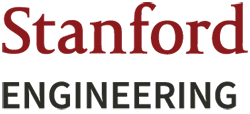Surface Grasping with Bio-inspired, Opposed Adhesion
Grasping is central to robotics, and numerous hands and grippers have been developed for applications ranging from personal service robots to industrial manufacturing lines. Either by wrapping around an object to support it from underneath or by using internal forces and friction, these traditional grippers can grasp many objects securely. However, this approach does not work when the object is much larger than the hand. In this case, adhesion becomes a solution.
Various adhesive technologies have been applied in robotics, including suction, magnetic forces and electrostatic forces. Most of these technologies require active control and consume power. Many are also limited to a range of surface properties or materials. In nature, we find alternative solutions including arrays of fine spines for attaching to rough surfaces and microscopic features which can attach to smooth surfaces using van der Waals forces. For example, many insects use tiny spines and claws on their legs to catch on small bumps and pits (asperities) on rough surfaces for climbing and grasping. Gecko lizards have demonstrated van der Waals adhesion on smooth surfaces using fine hairs (setae) on the feet. These types of adhesion do not require power and have been proven strong, reusable, controllable, and adaptive to a wide range of surfaces. Learning from biology and using bio-inspired adhesion can facilitate better and more robust grasping of large objects.
Previous work has considered bio-inspired adhesion for climbing robots, where shear loads dominate. This thesis focuses on adhesion for manipulation so that the robot can apply forces and moments in any direction. The work expands the modeling and analysis of bio-inspired, directional adhesion for grasping applications, introduces an opposed-grip strategy for grasping and manipulation, and presents scaling methods to accommodate large forces and moments.
For insect-inspired microspines, a statistical model is developed to describe the asperity spatial and strength distributions and predict the shear and normal adhesion capability of a group of microspines. Various opposed-grip mechanisms are designed and modeled for grasping a range of rough surfaces such as concrete, asphalt and the bark of trees. The stochastic models of spine/surface interaction lead to insights for designing grippers that work effectively on a range of surfaces. A new opposed-spine gripper is demonstrated on a small aerial platform to let it perch on building walls and ceilings to save power and greatly extend mission life.
For gecko-inspired adhesives, similar opposed mechanisms are developed for both flat and curved surfaces. Based on the insights obtained from modeling arrays of directional adhesive tiles or films, a series of grippers are shown to have significantly increased adhesion capabilities as compared to simply increasing the adhesive area for a single adhesive patch. For large loads, different scaling strategies, such as a pulley differential and constant force springs, are developed and compared for various applications. Outriggers are added to grippers to enlarge moment capabilities for manipulation.
A passive, nonlinear wrist is presented to facilitate energy absorption while also remaining stiff for precise manipulation when loads are small and providing overload protection. An integrated gripper with the above elements is implemented to demonstrate grasping and manipulation of objects several times larger than the gripper itself. The limiting wrench space of such a gripper can be computed, providing useful information for robotic motion planning and control. A series of experiments on floating platforms, conducted with the NASA Jet Propulsion Laboratory, demonstrates the applicability of this approach for grasping and manipulating objects in space.
